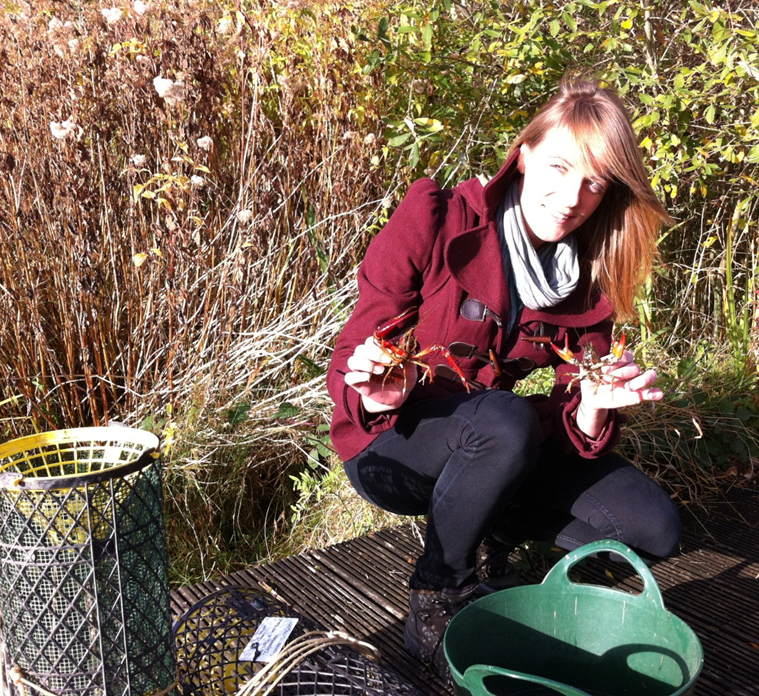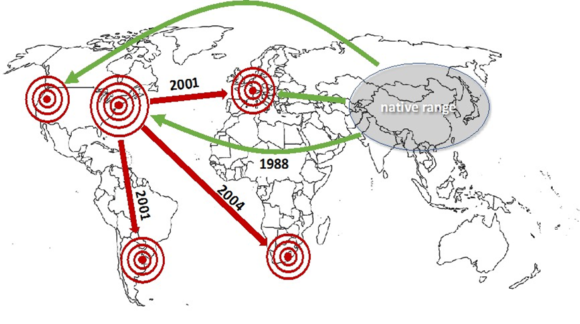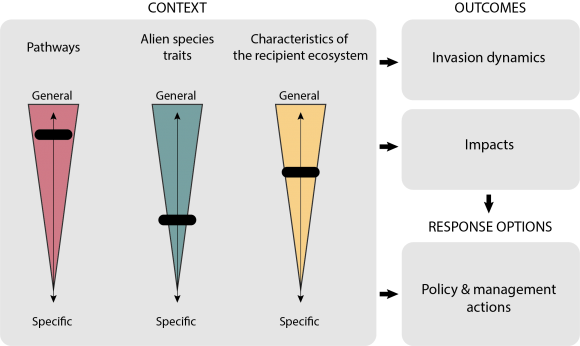17 April 2014 | By Michelle Jackson
The management of invasive species is made more complex when more than one invasive species is present in a given ecosystem at the same time. Several invasive species may have a greater effect than one species does alone and there can be synergistic effects that result in a cascade of impacts and a large change in the way the ecosystem functions. C·I·B researcher Dr Michelle Jackson and her colleagues from Queen Mary University of London examined how crayfish species in the Thames catchment in the Greater London area interact and affect the ecosystem. The project involved four invasive crayfish species: signal crayfish (Pacifastacus leniusculus), virile crayfish (Orconectes virilise), red swamp crayfish (Procambarus clarkii) and Turkish crayfish (Astacus leptodactylus). Crayfish are relatively large for aquatic invertebrates and they are omnivores, consuming both animal and plant material.

The researchers found that the four species they studied had different impacts on local invertebrate communities, resulting in varying impacts at the ecosystem level. For instance, red swamp and signal crayfish increased rates of leaf litter breakdown by consuming leaf litter directly, whereas virile and Turkish crayfish reduced breakdown by consuming other invertebrates which usually fed on the leaf litter. The four crayfish species had different diets and impacts, suggesting that the invaders can co-exist and that their independent impacts will add up to have an overall greater effect on the ecosystem when more than one species is present. Interestingly, the combination of crayfish species that were present in the ecosystem also mattered: virile and signal crayfish reduced invertebrate predator abundance when they were present alone, whereas the other two species only affected predator abundance when they were present together.
Dr Jackson and her colleagues concluded that their findings have serious implications for the management of invasive species, as they show that the combined effect of multiple invasions on ecosystems can be reflected as either a simple additive effect, or as an amplified effect that is greater than the sum of their independent impacts. The lack of a general pattern among species makes the development of management strategies more complicated, and suggests that experimental work is a valuable tool towards understanding the mechanisms behind aquatic invasions.
Read the paper
For more information, contact Michelle Jackson at mjackson@zoology.up.ac.za



